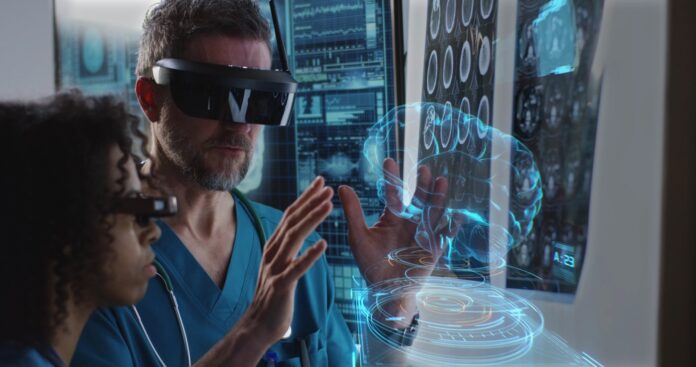In the technologically driven world of healthcare, a new paradigm is rapidly evolving—the Internet of Medical Things (IoMT). As a connected infrastructure of medical devices, software applications, and health systems, IoMT is dramatically transforming patient care, improving system efficiency, and revolutionising healthcare delivery.
Understanding IoMT
The IoMT, an amalgamation of the Internet of Things (IoT) and medical applications, refers to a network of interconnected healthcare devices that communicate and exchange data with healthcare IT systems through online computer networks. It encompasses a wide range of devices, from wearable fitness bands and smart pacemakers to hospital-grade imaging machines and lab analysis tools.
Transforming Patient Care
The primary beneficiary of the IoMT revolution is the patient. Remote patient monitoring, a key IoMT application, allows healthcare professionals to monitor and analyse patient health data in real-time, enhancing preventative care and disease management. It also empowers patients to play a more active role in their healthcare, providing them with meaningful insights about their health status.
Furthermore, IoMT is heralding a new era of personalized medicine. With the ability to collect and analyse granular health data from different sources, IoMT tools can help tailor healthcare interventions to the specific needs of individual patients, a significant leap from the one-size-fits-all model.
Improving Healthcare Systems
Beyond individual patient care, IoMT can enhance system-wide efficiency in healthcare delivery. The seamless interconnection of devices facilitates real-time location services, inventory management, and predictive device maintenance in hospitals, reducing costs and improving workflow efficiency.
In addition, IoMT data can feed into healthcare analytics, providing valuable insights for informed decision-making at all levels of healthcare management, from individual practitioners to government policymakers.
Navigating Challenges
While IoMT brings numerous opportunities, it also comes with its share of challenges. The security and privacy of patient data is a primary concern. Healthcare providers must ensure robust cybersecurity measures to protect sensitive health data from potential breaches.
Interoperability is another critical issue. For IoMT to realize its full potential, devices and systems from different manufacturers need to communicate seamlessly—a significant challenge given the diverse range of devices and software applications in use.
Finally, regulatory compliance can be challenging, especially with the fast-paced nature of technology development. Regulators worldwide must strike a balance between fostering innovation and ensuring patient safety and data privacy.
The Future of IoMT
Despite these challenges, the future of IoMT looks promising. Advances in technologies like 5G, edge computing, and artificial intelligence promise to enhance IoMT’s capabilities and make it even more integral to healthcare delivery.
With continuous innovation and thoughtful regulation, IoMT can drive significant improvements in healthcare outcomes, efficiency, and patient experience. As we venture further into this exciting era, the IoMT represents a powerful lever to transform healthcare and foster a healthier future.
